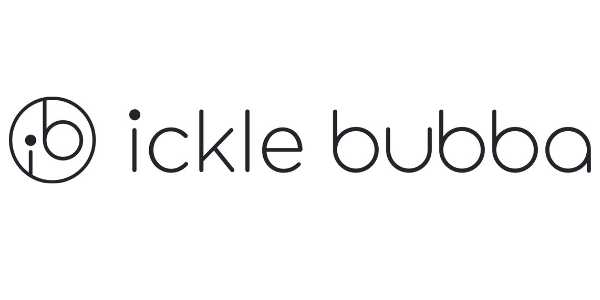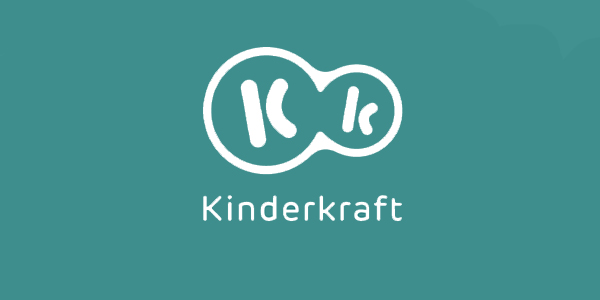 Car Seat Buying Guide
Car Seat Buying Guide
From the very moment your baby leaves hospital right up until they reach 135cm or under 12 years old, they will need to travel in a car seat for every journey. Obviously using a child car seat is the best way to keep your child safe in the event of an accident, but it’s also a legal requirement.
We hope this guide will help you to understand which car seat you need for wherever you are in your parenting journey.
-
Choosing a car seat
-
The Law
-
ISOFIX – what does it mean?
-
i-Size
-
Table of groups
-
The 5 main groups of car seats explained
-
Is travelling backwards safer?
-
Car safety guidelines and tips
-
Extra comforts while in the car seat

Choosing a car seat
Our large range of child car seats and travel systems are there to help keep your family secure throughout their early years. Here’s our guide to the most important things to think about when buying your child’s car seat.
For a younger child it’s their weight and not his or her age that is the critical factor in deciding which car seat is suitable and safe.
European regulations define 5 groups of child restraint systems (Group 0, 0+, 1, 2 and 3), each of which is suitable for a range of weights. These are shown in the table below. All the child seats in our range are designed to give your child the best possible protection. Some seats are designed to cover more than one group. All our child car seats are designed to meet the current safety standards as set out in ECE R44.04 or the new i-Size (R129) safety standards.
It’s recommended that a child continues to use a rear facing car seat until they are 4 years old. This is because a child’s body below this age is particularly vulnerable to forceful impacts, and a rear facing seat will provide the additional protection they need in the event of a collision.
The Law
In the UK, all children less than 135 cm tall or under 12 years old must use the child restraint appropriate for their height or weight in any vehicle (including vans and other goods vehicles).
You must not carry an unrestrained child in the front seat of any vehicle.
The seat must conform to the European standard: ECE R44.04 or i-Size (Regulation 129) and be fitted according to the manufacturer’s instructions. These have a label showing a capital ‘E’ in a circle and either ‘ECE R44’ or ‘R129’.
Rear-facing infant car seats must not be used in a seat protected by a frontal airbag unless the airbag has been deactivated manually or automatically.
A child may use an adult seatbelt when they reach 135 cm in height or the age of 12 years (whichever they reach first).
It is highly recommended that you never buy second hand, even from a friend or relative – it may have damage or missing parts that you can’t see.
For more advice on the law, refer to the UK Department of Transport website.

Isofix - what does it mean?
ISOFIX stands for 'International Standards Organisation Fix', a standard which makes fitting a child seat quick, simple and safe.
Isofix child car seats fit into Isofix connectors in the car, and in many cases they also have a support leg or top tether. They are easier to fit than seats that use the car's seat belts, and provide a more secure fitment.
However, not all cars have Isofix installed. So check with the child seat manufacturer or retailer or the car manufacturer, to find out if the Isofix child seat is approved for your vehicle. Many have a list on their website that shows which seats are approved for which cars.
If the Isofix child seat uses a support leg, make sure it will not rest on an underfloor storage compartment in your car. The compartment lid could collapse in an impact. If the seat uses a top tether, make sure your car has a top tether fitting point.
When did Isofix become standard in cars?
The first car to have Isofix was the Volkswagen Golf IV in 1997. Since 2004 it has become more widely offered and now all new cars have Isofix on at least some of the back seats. Top tether anchor points have come as standard since the end of 2012.
i-Size car seats will fit into all i-Size cars and almost all cars with ISOFIX points.
The 3 types of ISOFIX are
- Universal - Three ISOFIX anchorage points (two ISOFIX anchorage points with a third being top tether strap). Cars made in 2011 and after usually have universal anchor points in them.
- Semi-Universal - Two ISOFIX anchorage points with a supportive leg. It is a car specific solution, so you should refer to the car seat compatibility listing to ensure it fits your car. In most cases it's usually only underfloor storage compartments that may cause some installation issues.
- Car Specific - Two Isofix anchorage points which can be converted to 'Universal' by using a top tether strap.

i-Size
The new i-Size standard (R129), which was introduced in early 2014, has brought in additional crash testing and new technologies, which aim to ensure better safety for your child and more compatibility between car seats and vehicles. This new regulation will run in parallel with the current ECE R44.04 standard for the next few years.
It is worth noting that car seats meeting the new i-Size standard must use ISOFIX and pass a side impact test, which isn’t required for the ECE R44.04 standard.
i-Size car seats are still in the early stages of development and there are limited numbers of the seats and compatible vehicles currently available, their numbers will increase over the coming years.
It is also worth noting that i-Size car seats will fit into all i-Size cars and almost all cars with ISOFIX points.
For more detailed information on i-Size, see our Introduction to i-Size guide.
Table of Groups
| Group | Child's weight | Approx. age of child | Seat type |
|---|---|---|---|
| 0 | Birth - 10 kg (22 lb) | Birth to 12 months | Lie-flat or ‘lateral’ baby carrier, rear-facing baby carrier, or rear-facing baby seat using a harness. |
| 0+ | Birth - 13 kg (29 lb) | Birth to 15-18 months | Rear-facing baby carrier or rear-facing baby seat using a harness. |
| 0+,1 | Birth - 18 kg (40 lb) | Birth to 4 years | |
| 1 | 9 - 18 kg (20 - 40 lb) | 9 months to 4 years | Rear- or forward-facing baby seat using a harness or safety shield |
| 1,2 | 9 - 25 kg (20 - 55 lb) | 9 months to 6 years | |
| 2 | 15 - 25 kg (33 - 55 lb) | 3 to 6 years | Rear- or forward-facing child car seat (high-backed booster seat or booster cushion) using a seat belt, harness or safety shield |
| 1,2,3 | 9 - 36 kg (20 - 79 lb) | 9 months to 12 years | |
| 2,3 | 15 - 36 kg (33 - 79 lb) | 3 to 12 years | |
| 3 | 22 - 36 kg (48 - 79 lb) | 6 to 12 years | Rear- or forward-facing child car seat (high-backed booster seat or booster cushion) using a seat belt, harness or safety shield |
The 5 main groups of car seats explained
Child car seats are divided into categories depending on your child’s weight, age or height (i-Size).
Here is a short guide to these groupings to get you clued-up before you shop.

Group 0+
Baby Car Seats
For birth to 13kg / 29lb (from birth to 15/18 months).
Rearward-facing baby car seats (also known as infant car seats), the safest way for babies to travel, they have a carry handle (useful for transporting a sleeping baby from the car) and some have curved bases for gentle rocking.
Many models can be used with Isofix bases in the car, so you don’t need to use a seatbelt to secure it.
Most baby car seats can be fixed onto a pram or pushchair chassis, converting it into a travel system. Some even convert into a lie-flat carrycot for use on the pram or even in your car which is healthier for babies on longer journeys.

Group 0+ and 1
Toddler / Combination Car seats
For birth to 18kg / 40lb (from birth to 4 years).
This type of car seat is approved across two car seat categories and easily adjusts as your baby grows. Used in the rearward-facing position first until your baby is 9kg / 20lbs and can sit unsupported, then you can convert the seat into a forward-facing car seat.
Unlike a baby car seat, the combination car seat is larger, heavier and remains in your vehicle - these are a great choice if you don’t plan to use your car seat on your pushchair as a travel system, and the seat will last your child all the way through their toddler years.
Some car seats in this category even allow for extended rear facing to 4 years – the safest way for younger children to travel.
Most are installed using ISOFIX rather than the vehicles seat belt. ISOFIX is the safest and most secure way to fit your car seat.
Most models can recline, allowing newborns to travel in a more lie-flat position.
| |||||||||||

Group 1
Toddler Car Seats
For 9kg -18kg / 20-40lb (from 9 months to 4 years).
The next stage up when your little one has outgrown their baby car seat. Recognisable by deep sides and head support for impact protection. Most models are forward-facing and installed by seat belts, newer models can be installed using ISOFIX which offer better safety and easier installation.
Most car seats in group 1 are forward facing although some are available that also offer the option of extended rear-facing travel until approx. 4 years old which is the safest way for young children to travel.

Group 1-2-3
Child Car Seats
For 9-36kg / 20-79lb (from 9 months to 12 years).
This forward-facing model is approved across three car seat groups, so makes a good long-lasting option. These models usually include a 5 point safety harness or impact shield for the earlier stages and then easily adapts as your child grows, converting to a high back booster seat – ideal for older children until they can safely use an adult seatbelt.
Most models can be installed in the car using ISOFIX for a safe and secure fit.
This group features a height-adjustable head rest to keep your child comfortably supported as they grow and ensures the vehicles seat belt (when used from 15kg / 33lb) is at the correct height to keep them correctly and safely seated.

Group 2-3
Child Car Seat
For 15-36kg / 33-79lb (from 3 years to 12 years).
Approved across Group 2 and 3, this model will provide a safe seat for your child up to 36kg until they no longer need to use a car seat. Models without a harness are designed so children are secured using the adult seatbelt.
Most models can be installed in the car using ISOFIX for a safe and secure fit.
Car seats in this group tend to feature an adjustable headrest, and some can also adjust in width or have adjustable leg rest to ensure a growing children are kept nice and comfortable.
These models also tend to be lightweight and easy to fit, so are also ideal for transferring between cars.
Booster seats without a high back (Group 3) are not recommended as they give no upper protection whatsoever.
 Is travelling backwards safer?
Is travelling backwards safer?
Under the old regulations children could switch to a forward-facing car seat at nine months, but it's actually safer to keep them in a rearward-facing car seat for as long as possible.
Babies are built differently to adults, and their little bones are really fragile. Babies have a large and heavy head compared to the rest of their body. In addition, their neck muscles are not yet fully developed.
If they're facing forward and you need to brake hard, the force of being thrusted forward could do significant damage to their neck and spine. By placing the baby in a rearward-facing position, the forces exerted during the crash will be distributed across the baby’s entire back.
Car Safety Guidelines and tips:
DO
- Always use a child restraint system appropriate to your child's weight and development and until your child reaches 135cm in height or their 12th birthday, whichever is sooner. Remember it’s the law.
- Read the fitting instructions carefully and store them with the seat for future reference.
- It is best to practise a few times using the car seat before putting your child in it for the first time.
- Ensure that everyone (including grandparents) who will be fitting the car seat is confident in doing so.
- Use the car seat for every car journey, however short.
- Check the car seat regularly to ensure it is firmly secured in position every time you use it.
- Discourage your child from playing with the buckles.
- Check regularly for wear and tear on harness, buckles and the seat shell.
- Regularly clean away any biscuit crumbs from the car seats harness mechanism.
- Check that shoulder straps are slightly below the child's shoulders in a Group 0 and 0+ car seats, and level with, or slightly above the shoulders for forward-facing seats.
- Check the safety harness is firm. You should only be able to get two fingers between the straps and your child's chest.
- A handy tip is to buy an additional baby rear-view mirror to keep an eye on your child, to avoid having to look around while driving.
DON'T
- Never leave your child unattended in the car, not even for a moment.
- Never put an adult belt round an adult and child together.
- Don't ever use a second-hand car seat, even from a friend or relative as there could be invisible damage to the structure or parts missing that you can’t see.
- Never use a car seat that has been in an accident, however minor. There may be invisible damage that you can’t see. Most car insurance companies will cover this.
- Never leave heavy or sharp objects loose in the car, put them in the boot, so if you’re involved in a collision they won’t fly around your vehicle and injure the occupants.
- Don't leave metal parts and fittings exposed on hot sunny days - they can get very hot. Keep a blanket in the car to cover the seat when not in use.
- Never cover or modify buckles to prevent your child from playing with them, as this may seriously affect the quick release mechanism in an accident.

Extra comfort while in the car seat
Bored children may undo their seat belts or safety harness to attract your attention, so make sure they are always comfortable and amused. On longer journeys use travel accessories to provide a fun distraction for them, allowing you to safely concentrate on your driving.
Head support cushion
These head cushions are specially designed to give new-born babies extra comfort and support in child car seats.
Sun canopy or parasols
Ideal for use with baby car seats both in and out of the car. Helps to protect your baby against strong sunlight. Some can even be used when on the pushchair or travel system.
Car sun blinds
Suction pads secure the blind in the best position to shield your child from direct sunlight and UV rays. Also helps to keep the temperature down inside the car.
Car or Stroller toys
These toys tend to have clips to attach to the car seat or stroller so they don’t fall out of reach if dropped by your baby.
Blankets
Blankets will help to keep your baby warm in and out of the car during the winter months.
Rear-view mirror
Use an additional rear-view mirror to help keep an eye on your child when travelling. Especially useful when the child is rearward facing.
Car tidy
Usually hanging from the back of the vehicle seats, these are useful for storing books, toys, drinks and snacks.
Seat Protectors
Help keep your rear car seats protected from dirt and spills and also helps prevent your child's seat from making indentation marks in the seat fabric.




























